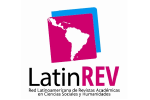Submissions
Submission Preparation Checklist
As part of the submission process, authors are required to check off their submission's compliance with all of the following items, and submissions may be returned to authors that do not adhere to these guidelines.- The submission has not been previously published, nor is it before another journal for consideration (or an explanation has been provided in Comments to the Editor).
- The submission file is in OpenOffice, Microsoft Word, or RTF document file format.
- Where available, URLs for the references have been provided.
- The text is single-spaced; uses a 12-point font; employs italics, rather than underlining (except with URL addresses); and all illustrations, figures, and tables are placed within the text at the appropriate points, rather than at the end.
- The text adheres to the stylistic and bibliographic requirements outlined in the Author Guidelines.
Copyright Notice
The authors retain the rights that may arise from potential reissues, recasts of content or other actions and uses of their articles, but are obliged to indicate the origin of the first publication of their article in this journal, by means of a call at the bottom of the page placed with asterisk in the title and complemented by the corresponding explanatory note, or other effective resource. Likewise, the University of Cuenca retains the rights that its regulations specify. In this regard, both parties agree:
- The publishing entity and the authors manage their rights according to the Creative Commons Attribution-NonCommercial-NoDerivs 4.0 International License (CC BY-NC-ND 4.0), under which they are published. See: https://creativecommons.org/licenses/by-nc-nd/4.0/
- The publishing entity and the authors adhere ethically to the standards of the COPE Best Practice Guidelines for Journal Editors. See: https://publicationethics.org/files/u2/Best_Practice.pdf
The journal does not pay fees for copyright or for evaluation of originals; case in which official notifications are issued so that peers can record their academic collaborations. There is no charge for the submission or publication of articles.
Privacy Statement
Digital preservation constitutes an institutional responsibility and a commitment of all the magazine's technical staff. In addition to the LOCKSS service, other procedures are used:
• PKP PN Plugin activated on the OJS platform.
• Storage of digital resources in the magazine's space in the cloud.
• Evaluations in the use of preservation strategies such as data rejuvenation, data consistency checks; migration, emulation, technology preservation and digital archaeology.
• Periodic checks of the integrity of the files to avoid corruption.
• Security system that includes the existence of firewalls, intrusion detectors and automated cross-backup systems that ensure the preservation of information in the event of natural disasters or computer catastrophes.
• Constant updating of operating systems and applications.
• Control and policies for the definition of system administrative users and passwords
• Use of secure protocols (https).









